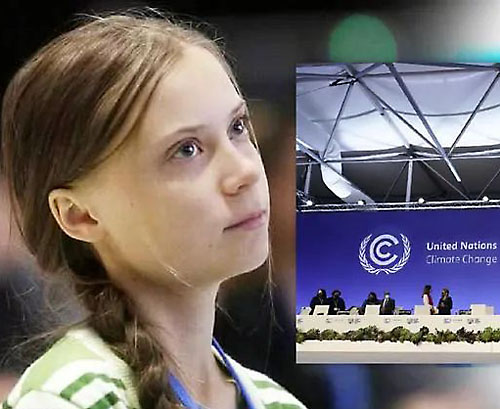by Thomas O’Dwyer

If the recent COP26 Climate Change marathon in Scotland was the last best hope for humankind, where can I reserve a seat on Elon Musk’s flight to Mars? With delegates jetting into Glasgow from around 200 countries, the event started to look like an episode of Monty Python’s Flying Circus with a cast of thousands. To a chorus of “Blah, blah, blah!” from Greta Thunberg’s street warriors, the first dispatches out of the media paddock were mostly cheap shots at the idiocies the gathering spawned. Like the giant foot stomping on dissent in a Python sketch, the massive carbon footprint generated by COP26 squashed all previous records for a climate crisis conference. Its emissions of 102,500 tonnes of CO2 equivalent was more than double that of the last UN climate summit. About 60 per cent of that represented the international travel of the 39,000 official delegates to the talks. Many of those attending were bag carriers, aides, professional lobbyists and other hangers-on. UK Prime Minister Boris Johnson flew by private jet to Cop26 from London, but after an outpouring of media scorn, he opted for the train on a subsequent visit.
As for cheap shots, a bloated delegation from impoverished Zimbabwe got theirs from a local supermarket, widely photographed loading up carts with hundreds of dollars worth of Scotland’s finest whiskies. They were later filmed celebrating President Emmerson Mnangagwa’s arrival at a raucous party on an Edinburgh beach, accompanied by much derision and anger on social media at home on the theme of, “Why are our leaders there, for whisky and T-shirts?” Many experts considered the event crucial for the future of our planet, but its geeky title remained mostly unrecognised by the public. Vox pop interviews on the streets in Scottish cities revealed that few knew what COP26 meant, and many seemed confused as to whether it was a climate or an environmental conference or what it was supposed to achieve. It’s a fair guess that this low level of public engagement was universal, explaining why many editors of popular media chose to run click-bait stories laden with those cheap shots and red herrings.
COP stands for Conference of the Parties, and it convened for the 26th time during the first two weeks of November. Read more »


